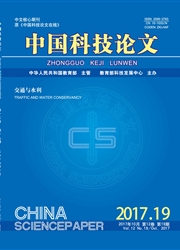

 中文摘要:
中文摘要:
不锈钢厨具等用品与食物接触时可能会释放少量金属离子。为认识Cr-Mn系不锈钢在酸性食物中的耐蚀性,采用添加氯化钠的沸腾醋酸溶液和电化学阻抗谱与电感耦合等离子体原子发射光谱(inductively coupled plasma-atomic emission spectrometry,ICP-AES)等测量方法,对比研究了2种Cr-Mn系不锈钢与304不锈钢的腐蚀行为和金属元素的溶出特征。结果表明,两种Cr-Mn系不锈钢在溶液中均处于稳定钝化状态,耐点蚀性能均略低于304不锈钢。随着不锈钢中Cr与Ni含量的降低、Mn含量的升高,钝化膜的溶解速率增大而保护性能降低,不锈钢的腐蚀阻力下降,从而导致Fe和Mn的溶出量增大。Ni元素溶出量随其在不锈钢中含量的降低而减少。3种不锈钢在酸性食物模拟环境中均具有良好的耐腐蚀性能。
 英文摘要:
英文摘要:
Stainless steel utensils such as kitchenware may release a small amount of metallic ions when foods contact them.In order to understand the corrosion resistance of Cr-Mn stainless steels in acidic food environments,the corrosion and metallic element release of two types Cr-Mn stainless steels and 304 stainless steel were investigated in the boiling acetic acid solution with sodium chloride by using methods such as electrochemical impedance spectroscopy and inductively coupled plasma-atomic emission spectrometry(ICP-AES).Both Cr-Mn stainless steels are in passive state and show slightly lower pitting resistance than that of304 stainless steel in the test solutions.With the decrease of Cr and Ni contents and increase of Mn content in stainless steel,the passive film shows higher dissolution rate and lower protective performance and the stainless steel has lower corrosion resistance.These give rise to the increase of release contents of Fe and Mn elements from stainless steel.Ni element shows lower release content with decreasing its content in stainless steel.All three stainless steels have good corrosion resistance in the simulated acidic foods environment.
 同期刊论文项目
同期刊论文项目
 同项目期刊论文
同项目期刊论文
 期刊信息
期刊信息
